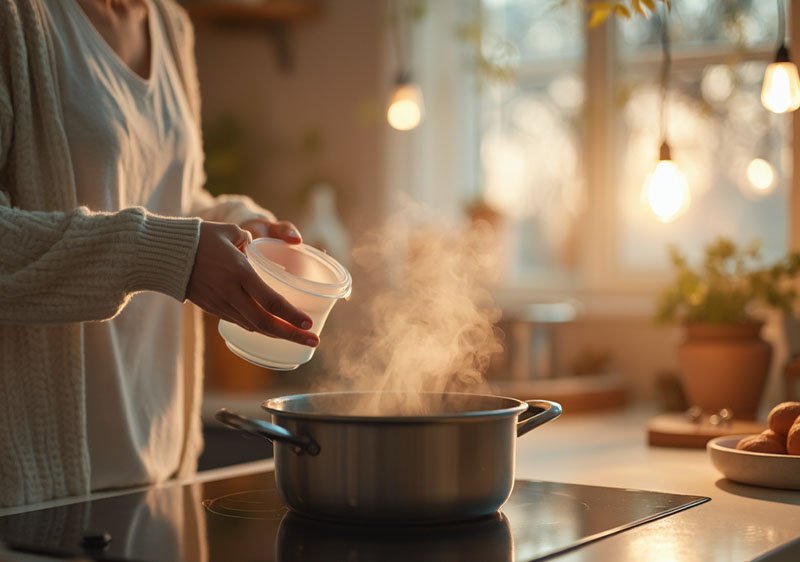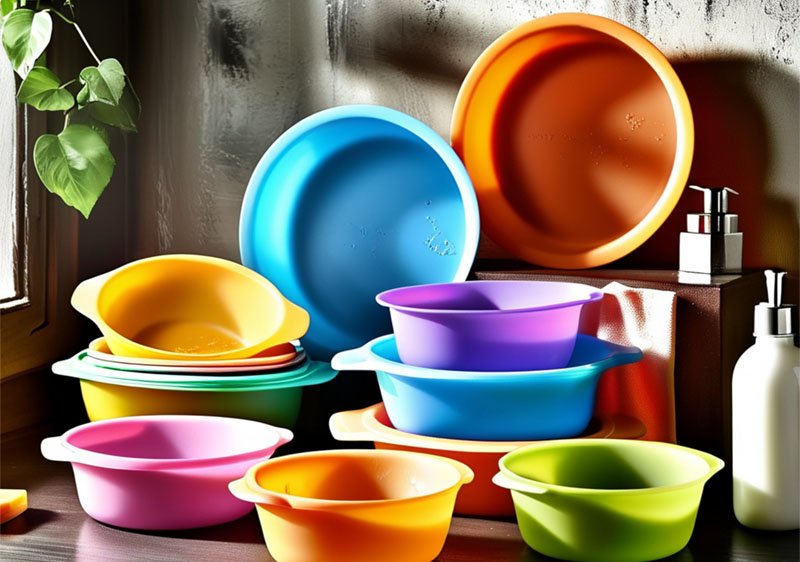Dirty baby feeding sets can become a health risk fast. I struggled with sticky residues and stains on silicone until I found simple ways to keep them spotless.
To clean and maintain silicone baby feeding sets, use mild soap, warm water, and avoid harsh chemicals. Sterilize regularly to kill bacteria and keep the silicone in good condition.
Keeping baby feeding sets clean is more than just washing off food. I’ve learned that proper care makes silicone last longer and keeps my baby safe. Here’s what works best.
How to sterilize a silicone baby feeding set?
I used to wonder if silicone needed special sterilizing. It turns out, it’s simple but important.
To sterilize a silicone baby feeding set, boil the items for 5 minutes or use a steam sterilizer to eliminate bacteria safely.

Sterilizing silicone feeding sets is easy. I usually place the items in a pot of boiling water for about five minutes. This method works well for dishes, utensils, and teethers. When I’m short on time, I use my baby bottle steam sterilizer, and it handles everything at once.
Sterilizing isn’t needed daily if you’re regularly washing the set, but I try to do it at least once a week or whenever my baby has been sick. Silicone can handle high heat, so there’s no risk of melting like with some plastics.
How to properly clean silicone baby plates?
After a few meals, baby plates can start to look greasy. I learned the hard way that just rinsing isn’t enough.
Clean silicone baby plates with warm water, mild dish soap, and a soft sponge to remove food and oil without damaging the surface.
I always start by rinsing the plate under warm water. Then, I use a gentle dish soap with no harsh chemicals. A soft sponge or cloth works best because abrasive pads can scratch the silicone surface. After washing, I let the plate air dry completely.
Some foods, like tomato sauce, can leave stains. When that happens, I soak the plate in a mix of baking soda and water for about 30 minutes before washing it again. This helps remove stains without damaging the material.
| Cleaning Step | Details |
|---|---|
| Rinse | Use warm water |
| Wash | Mild soap + soft sponge |
| Soak (if stained) | Baking soda + water solution |
| Dry | Air dry thoroughly |
How to clean silicone utensils for baby?
Silicone utensils get messy fast. I remember finding old food stuck in the grooves of spoons.
Clean silicone baby utensils with warm soapy water and a brush to scrub hard-to-reach areas, then rinse and dry thoroughly.

After meals, I rinse off any leftover food immediately. Then, I wash the utensils with gentle dish soap. For spoons and forks with small gaps, I use a baby bottle brush to clean every part.
Once or twice a week, I sterilize the utensils by boiling them. I always check for any signs of wear, like cracks or peeling. If I find any, I replace them to avoid bacteria buildup.
What should you not clean silicone with?
One time I used a harsh cleaner on a silicone plate, and it never felt the same again.
Avoid using bleach, abrasive scrubbers, or strong chemical cleaners on silicone baby products, as these can damage the surface and reduce safety.
Silicone is tough but not invincible. Harsh cleaners break down its structure over time. I stick with mild, baby-safe dish soap and soft tools. I also avoid metal brushes or scouring pads. Even though silicone feels durable, scratches make it easier for bacteria to hide.
If something seems extra dirty, I prefer soaking in vinegar and water or using baking soda paste instead of turning to strong chemicals.
How do you clean silicone without damaging it?
When I first started, I thought scrubbing harder meant cleaner. I was wrong.
To clean silicone without damage, use mild soap, soft sponges, and avoid extreme force or abrasive tools during washing.

I follow a gentle routine. First, rinse with warm water. Next, lather with a soft sponge and baby-safe soap. I gently scrub, making sure I reach all corners, and rinse well. Silicone doesn’t need heavy scrubbing because it releases food easily with the right soap.
Drying is just as important. I leave silicone to air dry fully on a rack. Storing damp items can cause unwanted smells or mold over time.
How to get rid of bacteria on silicone?
I worried about invisible bacteria after a stomach bug ran through our house.
Boil silicone items for five minutes or use a steam sterilizer to kill bacteria and keep them safe for baby use.
Regular washing handles most germs, but sometimes I go the extra step. I prefer boiling water for deep cleaning. I also occasionally use a diluted vinegar solution (one part vinegar to four parts water) to soak the items before rinsing.
When I’m traveling and can’t boil, I wipe silicone items with baby-safe sanitizing wipes and wash them as soon as possible. Keeping bacteria under control is part of why I love silicone—it’s easy to sanitize without ruining the material.
What is the best soap for silicone dishes?
Not all soaps are created equal. I found out that strong degreasers left a weird smell behind.
The best soap for silicone dishes is mild, fragrance-free dish soap designed for baby items to avoid residue and protect the material.
I avoid anything with strong scents, dyes, or added antibacterial agents. These can cling to silicone and may not rinse away fully. I look for simple, gentle formulas made for bottles and pacifiers.
These soaps clean well but rinse out completely, which helps silicone stay soft and safe. If I ever notice a soap smell lingering, I soak the dishes in boiling water to clear it up.
Conclusion
Proper cleaning and care of silicone baby feeding sets keep them safe, long-lasting, and ready for every meal.